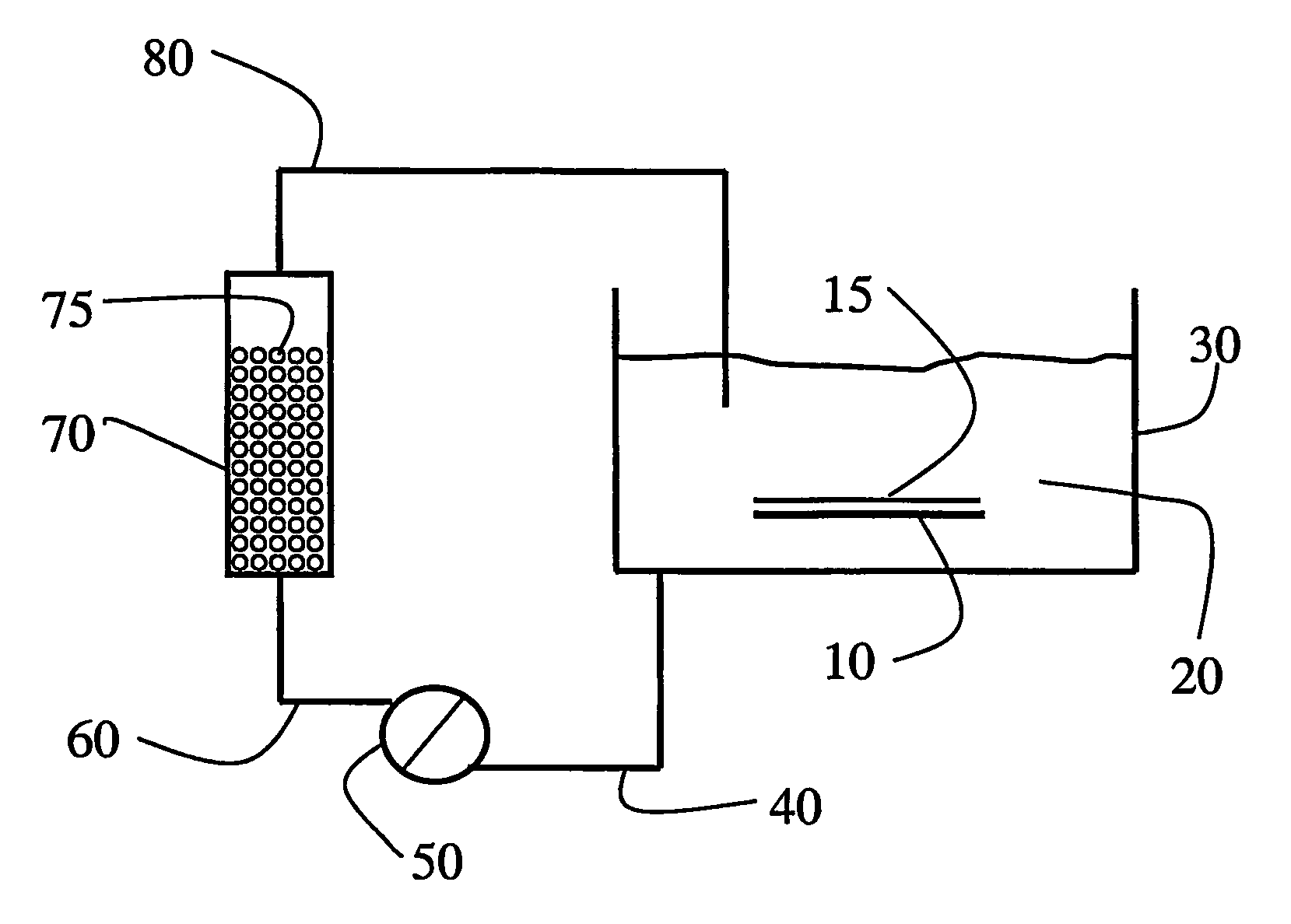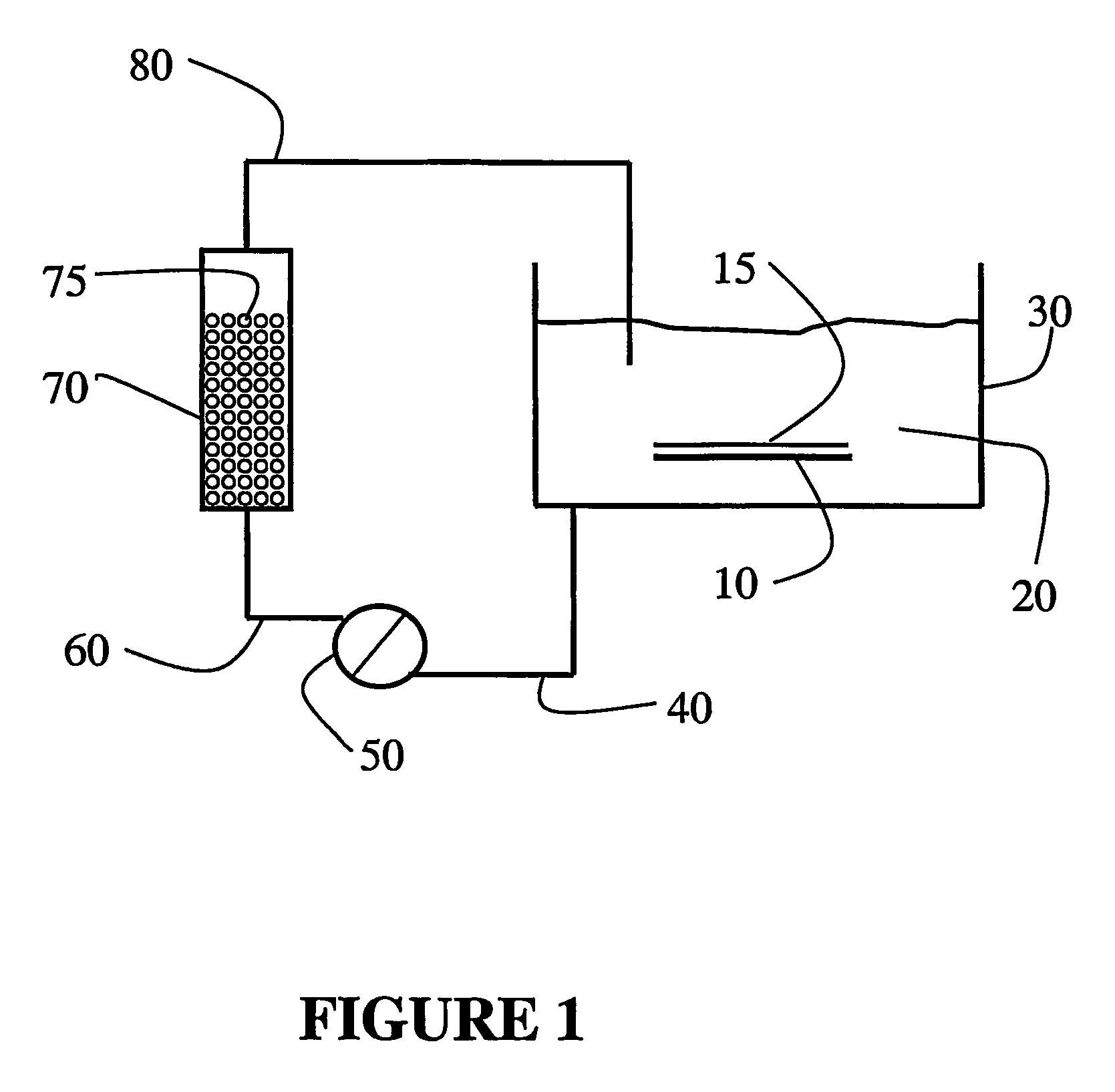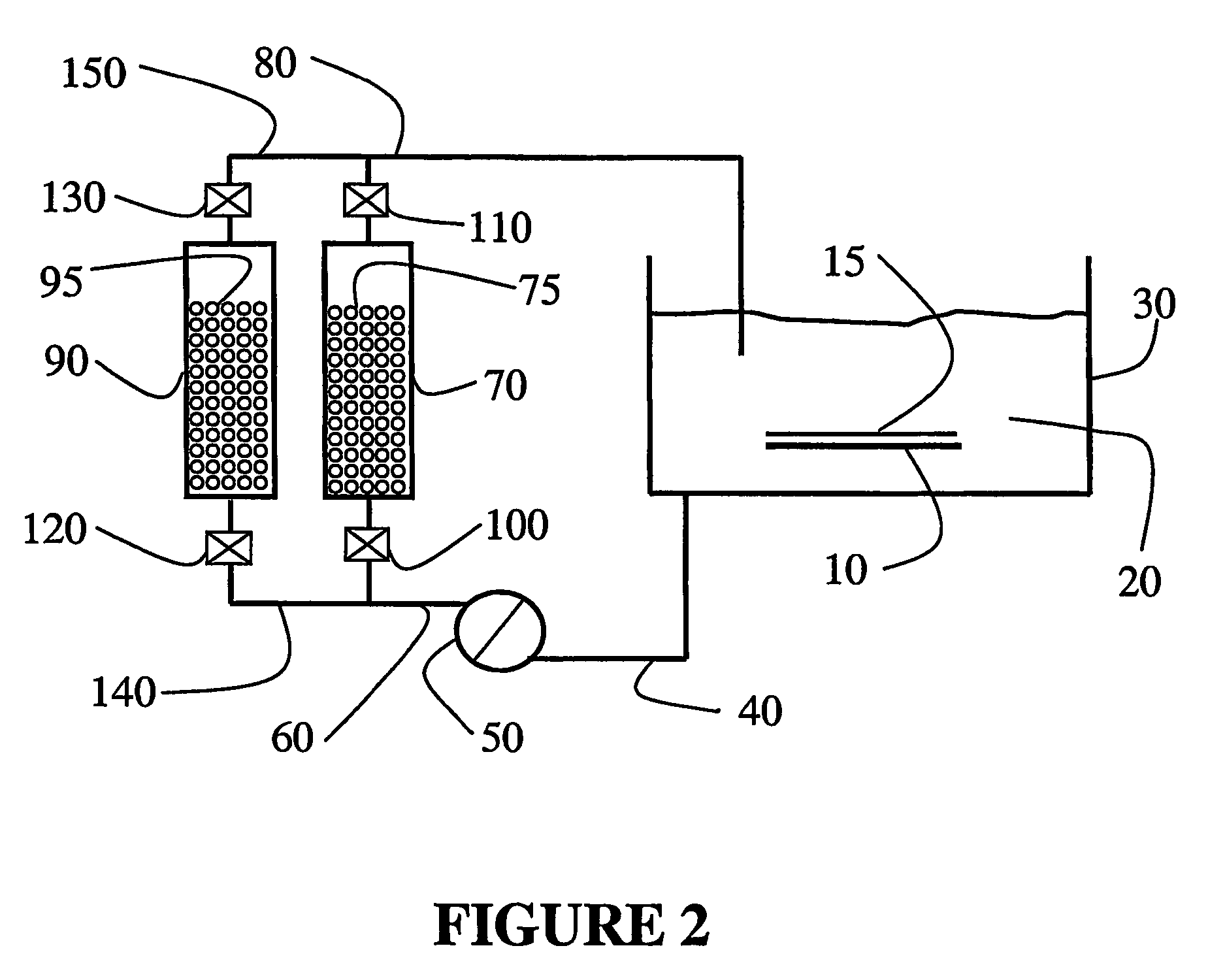Method for low temperature growth of inorganic materials from solution using catalyzed growth and re-growth
a technology of inorganic materials and low temperature, applied in the direction of liquid/solution decomposition chemical coating, solid-state diffusion coating, coating, etc., can solve the problems of adding to the cost and complexity of the process, adding to the environmental load of the process, and the very low deposition rate of the siosub>2 /sub>lpd methods of about 8 nm/hour
- Summary
- Abstract
- Description
- Claims
- Application Information
AI Technical Summary
Benefits of technology
Problems solved by technology
Method used
Image
Examples
first embodiment
[0014]FIG. 1 is a schematic diagram of an apparatus constructed in accordance with the present invention utilizing a single quantity of silica.
second embodiment
[0015]FIG. 2 is a schematic diagram of an apparatus constructed in accordance with the present invention utilizing two quantities of silica.
DETAILED DESCRIPTION OF THE PREFERRED EMBODIMENTS
[0016]Referring initially to FIG. 1, a substrate 10 is immersed in a reactive solution 20 held in a first container 30. A pipe 40 provides fluid communication between first container 30 and a pump 50, such that reactive solution 20 enters pump 50. Pump 50 then transfers reactive solution 20 to a second container 70 via a pipe 60. Disposed within second container 70 is a quantity of silica (silicon oxide) 75. A pipe 80 provides fluid communication between second container 70 and first container 30 such that reactive solution 20 exits second container 70 and re-enters first container 30.
[0017]In this embodiment of the present invention, substrate 10 is chemically treated to activate it for growth of a silicon oxide film 15. The methods used to activate a substrate for growth of a silicon oxide are w...
PUM
| Property | Measurement | Unit |
|---|---|---|
| temperature | aaaaa | aaaaa |
| temperature | aaaaa | aaaaa |
| pH | aaaaa | aaaaa |
Abstract
Description
Claims
Application Information
 Login to View More
Login to View More - R&D
- Intellectual Property
- Life Sciences
- Materials
- Tech Scout
- Unparalleled Data Quality
- Higher Quality Content
- 60% Fewer Hallucinations
Browse by: Latest US Patents, China's latest patents, Technical Efficacy Thesaurus, Application Domain, Technology Topic, Popular Technical Reports.
© 2025 PatSnap. All rights reserved.Legal|Privacy policy|Modern Slavery Act Transparency Statement|Sitemap|About US| Contact US: help@patsnap.com



